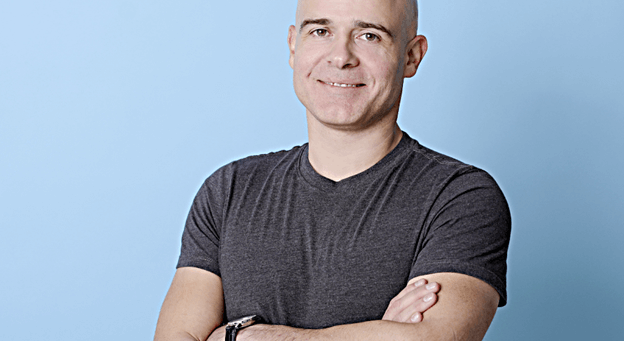Zeev Farbman explains what it means to be a content creator in 2022 and how he sees his business, Lightricks, fitting into that experience.
Supporting Content Creators On Their Journeys From Hobbyists To Breadwinners
Zeev Farbman explains what it means to be a content creator in 2022 and how he sees his business, Lightricks, fitting into that experience.

Some ten years ago, Zeev Farbman and a few members of his research team at Jerusalem’s Hebrew University decided to abandon academia to found Lightricks, a software shop that hit the big time with its first product release, a mobile app called Facetune.
Today, Lightricks’s various apps have been downloaded over 650 million times, and the company is experiencing unprecedented growth, finding itself at the epicenter of the burgeoning creator economy.
Last fall, Lightricks closed a $130 million Series D funding round at a $1.8 billion valuation. In March, Farbman announced that the company had acquired Popular Pays, a collaboration platform that has served as the hub for campaigns spanning over 100,000 pieces of content across 40,000 creator-brand partnerships.
In recent months, Lightricks has been focusing on integrating powerful text-to-image AI into its suite of products, further enabling content creators to turn their ideas into engagement magnets.
"Content creator" has only recently emerged as a career path for the self-employed. What are the biggest challenges that people interested in it face today, and what is Lightricks doing to help them?
These newly minted creators, like many artists before them, first need to find their passion for visual creativity, then understand the tools and how to use them, and lastly learn the ways to effectively earn a living from it and create a business model that makes it sustainable (this includes all the administrative, legal, and technical needs of any business).
Lightricks has already created several powerful tools to empower creators to use their phones as a visual editing tool, so we’re lowering the entry bar for them to begin making valuable content.
Next, we are helping creators help each other, for example introducing templates in our Videoleap feed, where creators can leverage the knowledge and skill of more experienced creators to create the base for a short-form video and then adjust or customize the resulting remake as it suits them.
And just as we anticipate the addition of Popular Pays to create a marketplace for this new content, we will look to add other services in the future that provide professional support for these new creators. Popular Pays offers a unique marketplace for these same creators to present their content and leverage their loyal followers in an easy to search database, opening up doors to both them and brands to create new, more agile advertising campaigns.
To be successful as an independent content creator, must people go at it full-time?
There are many creators who make content purely for fun or to entertain their followers. And there are so many tools that are available to introduce users to the magic of creation.
It’s why we offer access to our basic tools for free – we want people to find their internal creator. If they fall in love with it, the small subscription fee for the full features is more than worth it. Millions of people have already captured many photos and videos, which is the basis for any good content. It’s a question of having a story to tell and then telling it.
Lightricks rose to where it is today by developing AI-enhanced apps for creating visual content. With Link in Bio and Popular Pays, now that's changing. Why are you diversifying, and what does that say about your company's strategic direction?
Before 2020, and COVID was suddenly pushing a lot of people to work from home or reevaluate their professions, our data said that roughly 75% of our users were creating content mostly for fun or passion projects.
Today, as more people are more serious about creating content, we are seeing about 75% of our users interested in monetizing this same content – they now recognize that they are the engagement drivers on social media, and that their creativity and editing skills have intrinsic value to their followers or to brands.
Many creators have continued to follow their passion and creativity, but we are seeing an increasing number who now want to use this passion as a career path, and are looking for help monetizing their content and support building a business around their own brand.
When Facetune first rose to the top of the app store charts, you didn't stop there and went on to develop several new products in the years that followed. When did you start to feel secure that Lightricks was going to be more than just the company behind Facetune?
When we founded Lightricks, we thought Facetune would be a small app, buying us time to develop the larger ones we had thought about. We never imagined it would top the app store charts for one year, let alone for several consecutive ones.
Our vision for Lightricks always was to create the best photo and video editing experience on mobile. It was 2012, and we happened to be working on our computer graphics research during the time when social media apps were taking off, Instagram was in its infancy, and Facebook was quickly becoming the go-to app for young adults and families to connect with photos.
During one of my late night walks home from the computer lab with some of my research partners, we realized that one of the components of our research might be appealing to the consumer market. So we introduced Facetune and our company, Lightricks.
We had thought it would have value – and that it might create a revenue stream to enable us to invest in our long-term research and vision. But we didn’t anticipate how quickly it would catch on, or just how quickly we would evolve from doctoral students to owners and leaders of a technology company.
Since then, Facetune has evolved considerably, and we’ve released other apps, notably Photoleap and Videoleap. It has been very exciting to see how the power that photo and video content has had on the growth and variety of social media, and our research and product development are well positioned to provide value in this rapidly growing area for creators.
Thanks for signing up to Minutehack alerts.
Brilliant editorials heading your way soon.
Okay, Thanks!